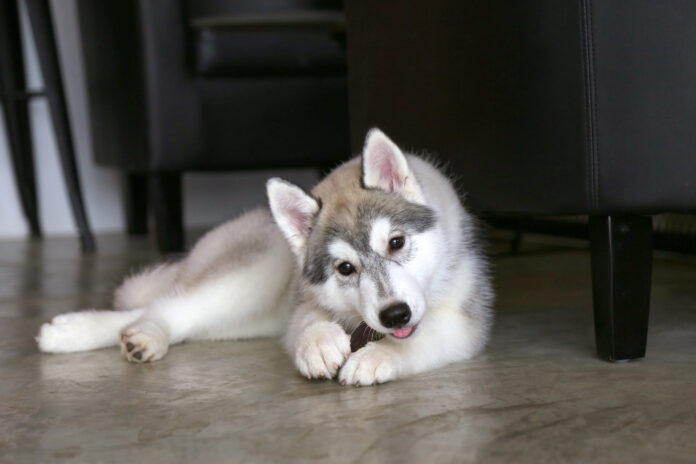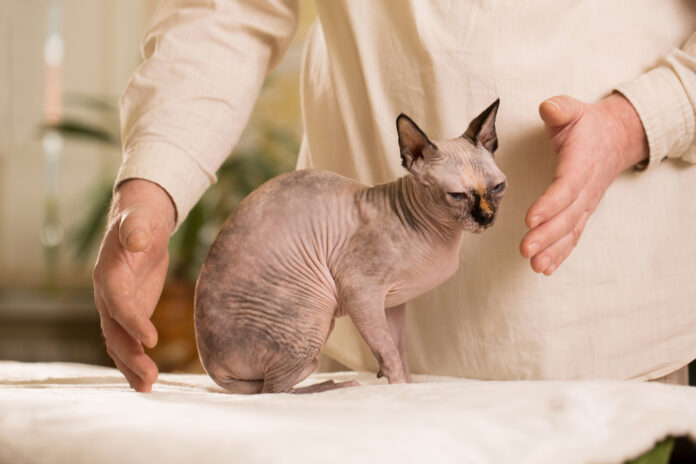How Lawn Chemicals Affect Your Cat

Pesticides, fertilizers, and other lawn chemicals are powerful toxins that can have an adverse effect on your cat’s health. Find out how to keep your kitty safe this summer.
Fertilizers, weed killers, and other lawn chemicals might result in a pristine lawn, but they have a sinister downside. These products are laden with toxins, and not only have a detrimental effect on our soil and water, but also on the animals that come in contact with them — including cats. Outdoor kitties are at the greatest risk, but even indoor cats can be affected. Here’s what you should know about lawn chemicals, and how to protect your cat from their adverse effects.
Exposure can happen several ways
Even long after application, lawn chemicals and their residue can have a negative impact on your cat. He can easily absorb the toxins through his paws, lick them off his fur, or ingest them by eating grass. Even if you don’t use these products in your own yard, your neighbors might, which becomes a concern if you allow your cat to roam outdoors.
Hazardous to human and animal health
Lawn chemicals range from fertilizers and weed killers to pesticides and fungicides. They present health hazards to humans as well as wild and domestic animals. Out of 30 commonly used pesticides:
- 19 are linked to cancer
- 13 with birth defects
- 21 with reproductive effects
- 26 with liver or kidney damage
- 15 with neurotoxicity
- 11 with endocrine disruption
While these figures pertain to humans, cats are much smaller and closer to the ground than we are, which suggests they may be affected even more severely.
than we are, which suggests they may be affected even more severely.
Keeping your cat safe
Protecting your cat (and yourself) from the harmful effects of lawn chemicals would be easy if everyone stopped using them! Since that’s unlikely, you’ll need to take steps to keep your kitty safe from these toxins.
- Consider natural, organic alternatives to lawn chemicals. They’re better for the environment, although some may still present a health hazard, so always check the ingredients before using them around your cat.
- If you’re using a lawn service, make sure they don’t use products that have been identified as toxic.
- Better yet, consider turning your yard into a natural habitat (if local bylaws allow) by using native plants, especially pollinator-friendly species, and foregoing chemicals altogether.
- Use compost as a fertilizer for your lawn and gardens, and something as simple as a hose to help control pests.
- Keep your cat indoors, or ensure he stays confined to your yard by building an outdoor enclosure for him.
- If you have an outdoor cat, try to keep him inside when neighbors are applying lawn chemicals. At a minimum, keep him away from treated lawns for at least 48 hours after application.
- Wiping down your cat’s fur and paws when he comes back inside may offer some additional protection.
- Always remove your shoes when you enter your house. Whether you live in a city, the suburbs, or a rural area, you’re going to track things in on your shoes that you wouldn’t want anywhere near your cats, including pesticides, fertilizers and other lawn chemicals.
While lawn chemicals are harmful substances that can have a negative impact on your cat’s health, there are lots of ways you can minimize his exposure and keep him safe.

AUTHOR PROFILE
Ingrid King
Ingrid King is a former veterinary hospital manager and author of five cat books, including Buckley’s Story: Lessons from a Feline Master Teacher, and Tortitude: The BIG Book of Cats With a BIG Attitude. Ingrid writes for magazines and websites around the world. She is the founder of Purrs of Wisdom with Ingrid King, where she writes about all things feline .For more information about Ingrid, please visit www.IngridKing.com.



